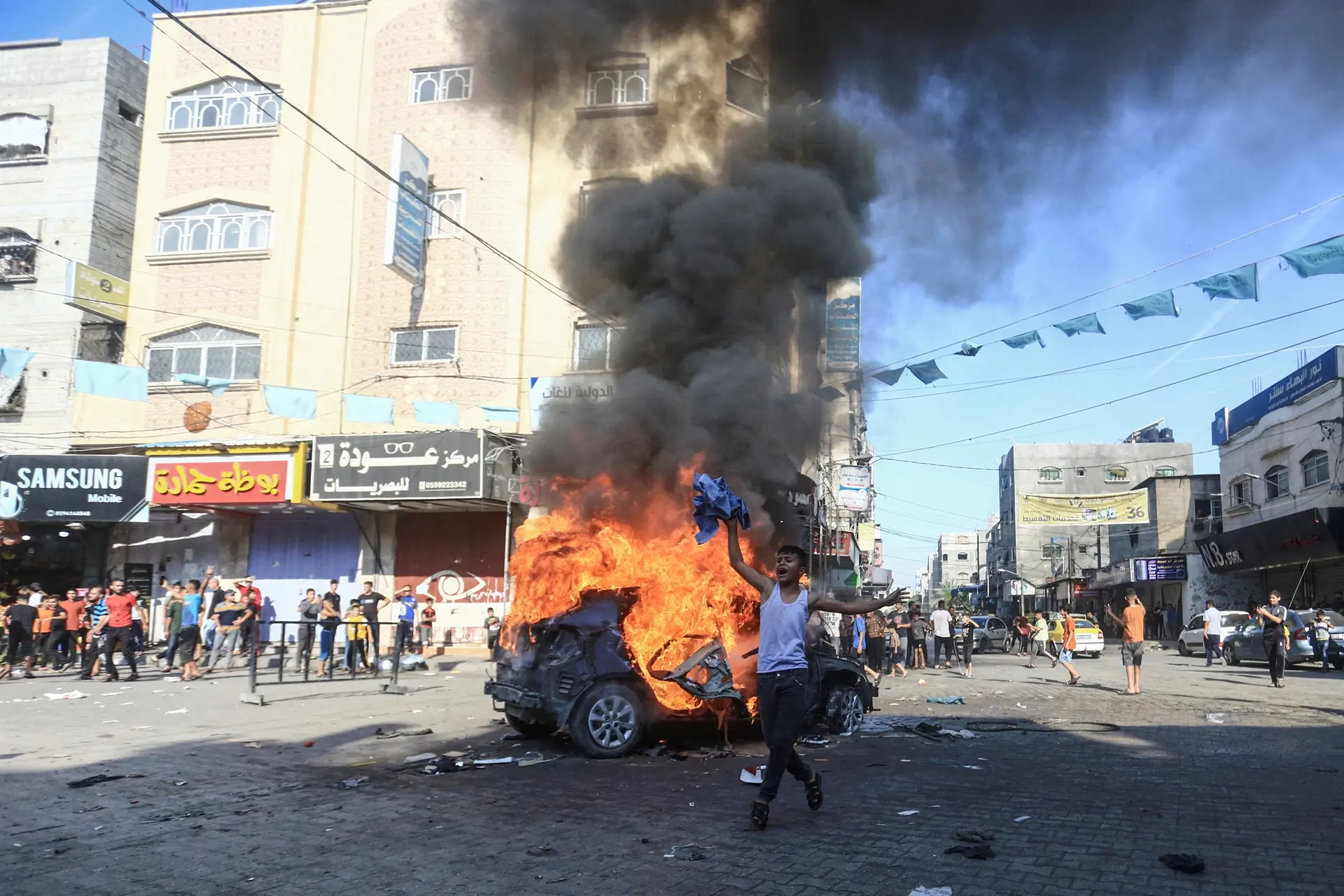New Delhi, Nov 11 (PTI): Less than a week after Hamas’s devastating attacks on October 7, Israel’s intelligence ministry produced a chilling document. It advocated that Israel remove all of Gaza’s Palestinian population and forcibly resettle them in the Egyptian Sinai Peninsula.
In November, a poster advertising a far-right rally in Tel Aviv juxtaposed an image of two cherubic Jewish-Israeli children on a beach (presumably in a vision of a future Gaza) with the ominous policy prescriptions of “occupy, expel, settle”.
Most worryingly, a cabinet minister suggested that Israel could use nuclear weapons against the Gaza Strip. Does this bellicose and dehumanising rhetoric suggest that Israel’s long-term plan for Gaza is to ethnically cleanse the territory, or even commit genocide there? There is scant evidence that Israel’s government has any intent or capability to achieve these unsettling goals. Israel’s regional and international partners – Egypt and the US – steadfastly reject any population transfer. Jordan has gone further, claiming that any such policy would constitute a “declaration of war”.
Turnout at the far-right Tel Aviv rally was negligible, and neither the minister who considered “nuking” Gaza, nor the intelligence ministry, have any tangible input in Israel’s national security decision-making.
What is more likely is that Israel will indefinitely occupy parts of Gaza, while seeking to eschew responsibility for civilian governance elsewhere in the territory. Israel’s prime minister, Benjamin Netanyahu, himself claimed that “we don’t seek to govern Gaza”, but added that the Israeli Defence Forces (IDF) should have “overall security responsibility” in the territory for “an indefinite period”.
This strategy is unsurprising, given that Israel has pursued it in all of its diverse occupations to date. These experiences provide a projection of what Israel’s planned “day after Hamas” scenario in Gaza might look like.
The day after First, Israel is unlikely to control Gaza’s urban areas for long. Israel baulks at managing everyday governance in an occupied territory and will refrain from overseeing Gaza’s health, education and welfare ministries, for example. Similarly, IDF planners know that a prolonged military presence in a dense urban area would be an operational nightmare.
Secondly, Israel may restore its attachment to “strategic depth”, a doctrine that seeks to take and indefinitely hold sparsely populated foreign territory. The idea is to keep any fighting outside of Israel itself. Israel is a small country that has gone to war with all its neighbours and as a result has felt safer the more territory it holds beyond its recognised borders.
Taken together, the doctrine of strategic depth and Israel’s desire to detach itself from civilian governance suggest that the IDF will seek to indefinitely occupy some, but not all, of Gaza.
There is growing evidence of what this might look like. Israel’s defence minister, Yoav Gallant, called for a permanent “buffer zone” to the west of the Gaza-Israel border. Deeper inside Gaza, the IDF has bisected the territory and besieged its cities, while avoiding a prolonged presence within them.
The problem with this twin strategy can be seen in Israel’s previous experiences in Gaza, which suggests it has rarely met Israel’s security goals.
Bitter experience Before it withdrew in 2005, Israel occupied about 20% of the sparsely populated but operationally valuable parts of the Gaza Strip, including access roads and strategic positions close to the border. It ceded the urban areas within most of the remaining 80% of the territory to the Palestinian Authority (PA) back in the early 1990s.
One factor that caused Israel to leave was the IDF’s dissatisfaction with the status quo. Strategic depth does not make violence less likely, but merely pushes it away from the border and into foreign territory. As a result, the international community saw Israel as an illegal occupier. This limited the IDF’s operational freedom, because of the international condemnation it attracted whenever it acted.
Strategic depth also failed to shield Israeli civilians. Despite the IDF occupation of 20% of Gaza, Hamas’ rockets were easily able to fly over the IDF soldiers and into Israel itself.
Simultaneously, Israel avoiding responsibility for Gaza’s civilian governance could allow Hamas to retake power. The Biden administration has encouraged Israel to empower the PA within Gaza’s urban areas. Yet, Israel’s far-right government will reject ceding governance to the PA, given that this would make a Palestinian state more likely.
The PA is weaker than ever before due to longstanding and endemic corruption and Israeli policy to curtail its power, particularly under Netanyahu, who has tacitly supported Hamas in Gaza as a competing force. As such, it is unclear the PA could ever have the capability to govern all of an independent Palestine.
This leaves an open question which Israel’s government can’t currently answer: who will govern Gaza if the IDF does remove Hamas? The final issue with this dual strategy is that it would constitute less a new Israeli approach and more a continuation of the same policies that proved so deeply flawed on October 7. Right up until Hamas’ incursion on that day, Israel accepted the Islamist group’s control of and governance over Gaza’s urban areas.
Concurrently, Israel unilaterally declared a 400-metre buffer zone on the Gazan side of the border. An intricate network of sensors, drones, walls and watchtowers monitored this zone, with Israel often meeting any unauthorised movement within it with live fire.
That this strategy failed to prevent the deadly attacks of October 7 should serve as pause for thought for Israeli decision-makers deliberating how a post-Hamas security regime could look. There is, however, little evidence that it has.
This report is given by PTI. The Sen Times holds no responsibility for its content.

